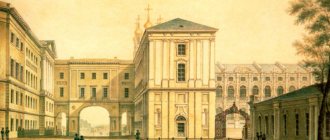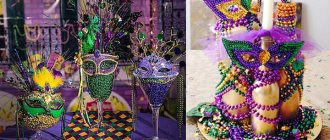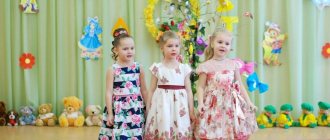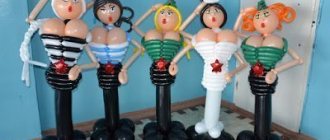Generals of the world
For this competition, the presenter (teacher) prepares either portraits or a little more complex descriptions of the great commanders of the world, for example, a commander with the surname of Salata (Caesar); a commander who was called a genius (Napoleon); the commander who conquered and conquered everything reached Asia (Macedonian); a commander who became the National Hero of Russia and the harsh surname did not bother him (Suvorov) and so on. The presenter makes a guess, and the guys guess. Whoever guessed the most is recognized as the best expert on military leaders and receives a prize.
By country and island
The class guys are divided into teams with the same number of people, approximately 3-4 participants. Each team receives a task sheet with pictures (they can be printed or drawn) of flags of different countries and islands of the world. Opposite each picture is written the first letter of the name of the country or island and then dots that correspond to the number of remaining letters that need to be entered. At the “start” command, the teams begin to familiarize themselves with the flags and guess the countries and islands. And the first letters will help even if you are seeing the flag for the first time (you can guess the letters by the letters). The team that is the first to correctly enter all the countries and islands on their task sheet will be the winner and receive a prize.
Fast mathematicians
The presenter will give commands, and the team members, having completed the mathematical commands in their heads, will quickly answer. The guys are divided into teams of equal numbers. The leader sets the rhythm of the game, and the teams take turns responding. For an incorrect answer, the participant is eliminated. If the team takes too long to think, the member also leaves the team. So, the leader calls any number, for example, 5. Then he turns to the first team and gives the command “multiply by 2”, the team gives the answer, then the leader turns to the second team and gives the command “subtract 4”, the command is from the resulting number after the previous action performs this action and gives a response, and so on. You need to answer quickly and correctly, otherwise you won’t win.
Competitions in the classroom for the New Year class hour (1st, 2nd, 3rd, 4th grade) on the topic
Games and competitions for the New Year
Game of "yes" and "no"
The host asks questions to which the game participants must quickly, without hesitation, answer “yes” or “no.” The one who makes a mistake is eliminated from the game.
— Is Santa Claus a cheerful old man? - Yes. — Do you like jokes and gags? - Yes. — Do you know songs and riddles? - Yes. — Will he eat all your chocolates? - No. — Will he light the children’s Christmas tree? - Yes. - Will he hide the threads and needles? - No. - Doesn’t he age in spirit? - Yes. — Will it warm us up outside? - No. — Is Joulupukki Frost’s brother? - Yes. — Did a rose bloom under the snow? - No. — Is the New Year getting closer? - Yes. — Does the Snow Maiden have skis? - No. — Is Santa Claus bringing gifts? - Yes. — Are all the masks bright on New Year’s Day? - Yes.
There is another version of this game. The presenter names the items, and the participants also quickly, without thinking, answer whether they are suitable for decorating the Christmas tree.
- Multi-colored firecrackers? - Yes. — Blankets and pillows? - No. — Folding beds and cribs? - No. — Marmalades, chocolates? - Yes. — Glass balls? - Yes. — Are the chairs wooden? - No. - Teddy bears? - Yes. - Primers and books? - No. - Are the beads multi-colored? - Yes. — And the garlands are light? - Yes. — Snow made of white cotton wool? - Yes. - Good soldiers? - No. - Shoes and boots? - No. — Cups, forks, spoons? - No.
"Snow Mission"
For this game, you can use a small ball or make a “snowball” out of cotton wool. The participants of the game stand in a circle and pass a “snowball” around the circle. At the same time they say:
We all roll a snowball, We all count to five. One-two-three-four-five - You should sing a song!
Whoever has a “snowball” on the last phrase fulfills this wish. The last phrase can be changed: “And read poetry to you!”, “Let’s dance for you!”, “Tell you a fairy tale!” and so on.
"Cooking Competition"
Within a certain time (for example, 5 minutes), the participants in the game must create a New Year's menu. All dishes in it must begin with the letter “N” (New Year). Dishes on the menu for Father Frost should begin with the letter “M”, and for the Snow Maiden - with the letter “S”. The one with the largest menu wins.
“I’ll sing now!”
On New Year's Day, it is customary to sing songs and dance around the Christmas tree. But this activity can be diversified. For example, when the presenter claps, everyone begins to sing the famous song “The little Christmas tree is cold in winter...”. At the second clap, singing aloud stops, but all participants in the game continue to sing to themselves. On the third clap, everyone starts singing out loud again. The one who enters incorrectly is eliminated.
"Fairy-tale character"
Cards are laid out on the table with the names of fairy-tale characters and cartoon characters written on them (with the inscriptions facing down). The participant in the game pulls out any card and, after reading what is written there, must, using facial expressions, gestures, and characteristic sounds, portray this character so that those present understand who they are talking about. The first person to guess pulls out the next card.
"Cinderella"
The game involves two people. Each participant is blindfolded and asked to disassemble his own slide, in which peas, beans, lentils, and dried rowan are mixed (the ingredients can be changed depending on what is in the house). Blindfolded participants sort the fruits into groups. The one who completes the task first wins.
"Mystery Prize"
A small gift (notebook, pen, etc.) is wrapped in paper, onto which a piece of paper with a riddle is glued. Once again they wrap it in paper and again glue the piece of paper with the riddle on it. There can be any number of such layers, it all depends on the number of players. The participant unfolds one layer of paper, reads the riddle to himself and says the answer out loud. Then he unfolds the next layer, reads the riddle again to himself and says the answer. If he doesn't know the answer, he reads the riddle out loud. The first one to solve this riddle unrolls the next layer of paper. The winner is the one who, having solved the last riddle, gets to the gift.
"Mobile phone"
Participants in the game name the numbers in order. Those who get the number 5 or its multiples say “ding-ding.” Those who get the number 7 and its multiples say “ding-diling.” The one who makes a mistake is eliminated from the game.
“Choose a prize!”
Various gifts wrapped in little bags are attached to a long rope. The participant in the game is blindfolded and given scissors. He must cut some gift, which he gets.
"Slipper for Cinderella"
Participants in the game put their shoes in a pile and blindfold themselves. The presenter mixes the shoes into a pile and gives the command: “Find your shoe!” Blindfolded participants need to find their pair of shoes and put on their shoes. Whoever completes the task faster wins.
"Toropyzhki"
For this competition you will need sweet jelly or, for example, halva. The winner is the one who eats the portion offered to him the fastest using a toothpick.
"The Harvesters"
The participants of the game are divided into 2 teams. The task of each team is to move as many oranges or tangerines as possible to a certain place without using their hands in a certain time (for example, 10 minutes).
"Riddles"
Each participant in the game has a piece of paper attached to their back with the name of an animal, object, etc. (for example, an elephant, a pen, a pear, an airplane), but so that the players do not know what is written on their pieces of paper. But they can read what is written on others' backs. Participants in the game must ask each other leading questions to find out what is written on their backs. The answers can only be “yes” or “no”. The one who guesses his “name” first is the winner. The game is played until the last person guesses correctly. Everyone receives incentive prizes.
"Sculptors"
This competition is best held outdoors. The presenter names a letter, and the competition participants must fashion any thing out of snow that begins with this letter. Whoever blinds faster and more reliably wins. You can conduct this competition at home using plasticine.
Ebony wand
The guys are divided into several teams with the same number of people. At the same distance from each team there is a chair with pieces of paper in the same quantity). Teams line up in separate rows. At the “start” command, the first participants each take an ebonite stick and forward to the chair with leaves, rub the stick along the way, generating electricity, run to their chair and, using the stick, lift one piece of leaf, put it in their hand and run back to their team, passing the baton to the second participants. The team that transfers all the pieces of paper using an ebonite stick faster than its opponents will be the winner.
Exact sciences
The guys are divided into teams of 4 people. At the command of the leader, the first 4 participants (one participant from each team) come to the board, divided into 4 parts. The leader notes the time and gives the command “start”, names the subject of exact science, for example, Physics, and the first team members begin to write symbols from the field of this subject (force, energy, mass, acceleration, etc.) with chalk on the board. After a minute has passed, the presenter stops the participants and counts the number of points: one term - one point. Next, the second team members are invited to the board, the leader again gives the command “start” and names the subject - Chemistry, and the guys write designations from this area on the board (any elements that they can remember, volume, density, designations of gas or sediment, and so on) . After a minute has passed, the presenter stops the participants and counts the points, adding these points to the points from the previous stage. Then the third participants take part, who get the subject - Algebra and the fourth participants, who get the subject - Geometry. And the team with the most points after all 4 stages will be the winner.
Games and competitions for grades 7, 8, 9
Ebony wand
The guys are divided into several teams with the same number of people. At the same distance from each team there is a chair with pieces of paper in the same quantity). Teams line up in separate rows. At the “start” command, the first participants each take an ebonite stick and forward to the chair with leaves, rub the stick along the way, generating electricity, run to their chair and, using the stick, lift one piece of leaf, put it in their hand and run back to their team, passing the baton to the second participants. The team that transfers all the pieces of paper using an ebonite stick faster than its opponents will be the winner.
Countries by continent
Children are divided into teams of several people, each team receives the same list with the names of countries of the world. At the “start” command, the guys must correctly distribute the countries by continent, that is, write the name of the continent opposite each country. On which this or that country is located, for example, China - Asia, Sweden - Europe, Namibia - Africa, Brazil - South America, Canada - North America, Mary Byrd Land - Antarctica, and so on. The team that finishes it faster is the winner.
I won't tell you, but I'll show you
Sometimes students do not like to learn poems, but they can easily show the whole meaning in their gestures. So, each student takes turns pulling out his own phantom from the hat, in which lines from a poem will be written. When everyone has received their forfeits, the guys begin to perform in turns, only the poems should not be told, but shown. One shows, and the rest guess. And prizes can be awarded to several participants: for artistry and for the largest number of poems guessed.
Exact sciences
The guys are divided into teams of 4 people. At the command of the leader, the first 4 participants (one participant from each team) come to the board, divided into 4 parts. The leader notes the time and gives the command “start”, names the subject of exact science, for example, Physics, and the first team members begin to write symbols from the field of this subject (force, energy, mass, acceleration, etc.) with chalk on the board. After a minute has passed, the presenter stops the participants and counts the number of points: one term - one point. Next, the second team members are invited to the board, the leader again gives the command “start” and names the subject - Chemistry, and the guys write designations from this area on the board (any elements that they can remember, volume, density, designations of gas or sediment, and so on) . After a minute has passed, the presenter stops the participants and counts the points, adding these points to the points from the previous stage. Then the third participants take part, who get the subject - Algebra and the fourth participants, who get the subject - Geometry. And the team with the most points after all 4 stages will be the winner.
Determine by taste
It's no secret that schoolchildren of this age are passionate about chips, crackers, and nuts. Therefore, the children will certainly enjoy this competition. Participants are blindfolded and, in turn, are offered to try chips (crackers) with different flavors: salami, chicken, jellied meat and horseradish, onions and sour cream, crab, cheese, cheese and onions, bacon, and so on. Whichever child can name all the flavors correctly will win.
Savvy from history
The guys are divided into several teams. The presenter takes turns showing a specific object or picture, based on which the teams must name the period or hero of the story. Whoever raises his hand first gets the answer. A correct answer gets a point, and the team with more points wins. Examples of pictures and objects: 1. Stone - Stone Age 2. Picture of Napoleon cake - Bonaparte Napoleon 3. Picture of a thunderstorm - Ivan the Terrible 4. Picture of Caesar salad - Julius Caesar 5. Picture of the "thaw" - the thaw period, the reign of Khrushchev 6. A picture depicting a Trojan virus - Troy and so on.
5 candies
The contestant holds five candies in his hand. He throws one of them up, and at the same time puts the rest on the table. Then he throws the first candy up again and, while it flies, takes one candy from the table. Then he tosses it again and takes the next one. And so on until he collects all the candies. The most dexterous and fastest wins.
Quick geographic crossword
The guys are divided into teams and each team receives its own crossword puzzle with questions on geography. Whoever solves it faster wins. An example of a crossword puzzle: Horizontal: the highest waterfall; Men wear skirts there too. Vertical: longest river; American unit of measure; second largest Indian city. Answers: Angel, Scotland, Nile, state, Delhi) and they need to be arranged so that one or more letters are included in several words at once.
Seasons
Four equal teams are formed from the participants. Each of them receives a card with the name of the season - winter, spring, summer or autumn. It is necessary to come up with as many associations as possible with the proposed word in 5 minutes. For example, for winter it could be “snow”, “cold”, “New Year”, “snowflake”, “skates”, “sleigh”, etc. The team that offers the most options wins.
Hands-legs
In front of each participant in the competition, 10 walnuts and a small sheet of paper are placed on the floor. At the leader's signal, participants must transfer all the nuts onto the sheet, using only their toes. The winner is the one who completed this task faster and more accurately than the rest.
I won't tell you, but I'll show you
Sometimes students do not like to learn poems, but they can easily show the whole meaning in their gestures. So, each student takes turns pulling out his own phantom from the hat, in which lines from a poem will be written. When everyone has received their forfeits, the guys begin to perform in turns, only the poems should not be told, but shown. One shows, and the rest guess. And prizes can be awarded to several participants: for artistry and for the largest number of poems guessed.
Children's tea party "New Year's games"
Extracurricular activity: “Both in peace and in harmony.”
"NEW YEAR'S GAMES"
M.B.U. "School" No. 94
primary school teacher
Sokolova L.A.
Children's tea party "New Year's games".
Target
: organize an educational and exciting event.
Tasks:
- promote the development of logical thinking, speed of reaction, and ingenuity.
- create a situation for developing a sense of collectivism, friendly competition, and pre-New Year mood.
Equipment:
interactive whiteboard, laptop, speakers. Costumes - Santa Claus, Christmas tree, bunny, wolf, old man). Scissors, paper, colored pens, pencils, markers.
- Tea drinking (New Year's table) - 10-15 min.
(Slide 1,2)
- Telegram to Santa Claus.
(Slide 3) The guys are asked to name 13 adjectives: “fat”, “red-haired”, “hot”, “hungry”, “lethargic”, “dirty”, etc. When all the adjectives are written down, the presenter takes out the text of the telegram and inserts into it the missing adjectives from the list.
Text of the telegram: “... Grandfather Frost! All... children are looking forward to your... arrival. New Year is the most... holiday of the year. We will sing for you... songs, dance... dances! Finally... New Year is coming! How I don’t want to talk about... studying. We promise that we will only receive... grades. So, quickly open your... bag and give us... gifts. With respect to you... boys and... girls.
We all call Santa Claus together.
(Santa Claus comes in and holds competitions)
- Contest"Puzzles
"(Slide 3)
•Who scattered the white snow and bound the river with strong ice? She came with the blizzard and the cold... What is her name?.. (winter)
• The tablecloth is white, covering the whole world. (snow)
• He pinches the cheeks, Bites the nose. Of course... (frost)
• On New Year's Eve he came to the house looking so ruddy and fat. But every day he lost weight and finally disappeared completely. (calendar)
• What a beauty, How magnificently decorated. Tell me who she is... (Christmas tree)
Not in summer, but in winter. But the sun will bake her, she will cry and die. (icicle)
• White, but not sugar, No legs, but walking. (snow)
• Without planks, without axes, the bridge across the river is ready. Who is he? Shall we answer? The bridge is like blue glass! Slippery, fun, light! (ice)
• What kind of stars are there on the coat and on the scarf? Everything is through, cut out, and if you take it, there is water in your hand. (snowflake)
• He sleeps in a den in winter under a huge pine tree. And when spring comes, He wakes up from sleep. (bear)
4. Game " YES-NO"
(Slide 4)
Is Santa Claus a cheerful old man? (Yes!) Does he like jokes and gags? (Yes!) Knows songs and riddles? (Yes!) Will he eat all your chocolates? (No!) Will he light the children's Christmas tree? (Yes!) Wearing shorts and a T-shirt? (No!) Doesn’t he age in soul? (Yes!) Will it warm us up outside? (No!) Is Santa Claus the brother of Frost? (Yes!) Is our birch good? (No!) Is the New Year getting closer? (Yes!) Is there a Snow Maiden in Paris? (No!) Is Santa Claus bringing gifts? (Yes!) Does he drive a foreign car? (No!) Wears a cane and a hat? (No!) Sometimes he looks like his dad? (Yes!)
- Theatrical performance of the song “A Christmas tree was born in the forest.”
(Slide 6)
Participants:
parents of students - dressed up as characters, show movements, students sing a song.
- Competition "Twins". (Slide 7)
It is necessary to cut out as many snowflakes as possible for a while. The competition involves 2 pairs of parents and children. Couples are tied with 1 hand each, and with their free hand they cut out snowflakes (the child folds it, and the parent cuts it out).
- Competition “Guess the Melody”” (Slide 8-14)
To participate, 2 pairs are required: parent and child.
Parents sit down on chairs, and children stand behind them.
As soon as the student guesses the melody, he presses his parents on their shoulders, and they, in turn, emit a sound signal they have previously chosen.
Having guessed the song, everyone sings it together.
- Competition "New Year's Menu"
(Slide 15.)
(make up names) - write the menu on the form and take it to the board.
TROT – cake RITSAKU – chicken LASTA – salad JONOEMORE – ice cream
TOSHKAKAR – potatoes BARY – fish POTKOM – compote APUSTAK – cabbage OTLETKA – cutlet
9 .
Happy New Year (Slide 16)
Presentation of cards to the parent committee. Children congratulate their parents with the song “New Year” and give them a talisman - a monkey as a gift. Parents sing along to the song.
10. Distribution of gifts accompanied by music. (Slide 17)
—
Santa Claus gives gifts.







